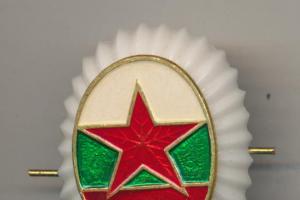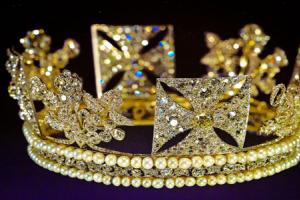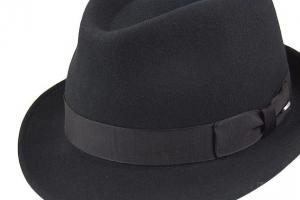Note! During growth, lower leaves date palm at times they darken and die, which often begins to cause concern for the gardener. But if it does not become widespread, then it is a common, natural phenomenon.
Top dressing
Liquid is best for date palm. organic fertilizer. I do not advise beginning flower growers to experiment with preparation, but to buy ready-made fertilizer. During the period of active development, plant three times a month. Also good result Additional monthly feeding with a solution of potassium nitrate (one gram per liter of water) also provides benefits. In winter, feeding does not stop, but is reduced to once a month.
Transfer
As I already noted, the date grows very slowly, so it is considered young for quite a long time, up to about 5 summer age. It is transplanted annually before reaching this age. Afterwards, the palm tree is replanted only when the need arises. Most often this is necessary when the plant’s pot becomes small. For very large plants It is also practiced to only replace the top layer of soil. Moreover, if the roots protrude excessively onto the surface of the earth, then they too are cut off (a layer of 5 to 10 centimeters). If you do not want to use purchased soil, you can make it yourself by mixing turf soil, humus, compost and sand in equal parts. To avoid stagnant water, ensure good drainage.
Noticed an error in the text?
Select it with the mouse and press Ctrl+Enter
Site search
Sections of the site
Latest articles
Latest comments, questions and answers to them
- Uncle Cactus onThere's nothing particularly creepy. You can leave it as it is...
- Maya onHello, I have such a problem, my Money…
- Svetlana onLast March 8th they gave me a hyacinth with a bulb. ABOUT…
- Evgen onThe most common pests of flower decoration...
- Uncle Cactus onSure, not a problem! Succulents get along well with each other...
There are many varieties of palm trees, but the date remains the most popular in home floriculture. The date palm or date (Phoenix) is a tropical tall plant belonging to the Palm family (aka Arecaceae), native to Africa and Eurasia. But the date can live not only in the tropics - the plant is successfully used for decorating residential premises and offices, landscaping greenhouses and winter gardens.
In nature, the tree reaches gigantic sizes, producing huge clusters of tasty and nutritious fruits.
Various types of date palm are represented by woody forms or squat shrubs belonging to the group of pinnate palms. In natural conditions where the palm tree grows, it reaches a height of 12–15 m, and sometimes a gigantic size of about 30 m. industrial purposes dates are grown to produce tasty and nutritious fruits - dates, and its juice is used in the production of sugar.
At home, the date palm grows only up to 2.5 m in height, after which its growth stops. Yellow flowers Dates are collected in inflorescences - panicles. Flowers and fruits appear on perennial trees 15 meters high, but it is impossible to grow such a tree at home. Dates grown at home do not bear fruit.
There are 17 species of date trees in total, and three of them are especially common in home gardening. This:
- date (Phoenix dactylifera);
- Canary date (Phoenix canariensis);
- roebelen date (Phoenix roebelenii).
All types of date trees are highly decorative, fit perfectly into any interior space, are suitable for home and office landscaping, and growing in greenhouses. The date palm is very hardy and unpretentious, and therefore is the most popular among gardeners.
Date care
Growing a date palm requires the creation of certain conditions - temperature, humidity and lighting, and timely application of fertilizers.
Lighting
A domestic date tree should grow in a well-lit place. At the same time, the plant has straight Sun rays harm, and it is better to shade it during the hottest lunch hours.
The indoor date palm loves free space, so it is not advisable to place the plant in a room cluttered with furniture.

In order for the leaves to form evenly and symmetrically, the plant must be rotated periodically.
Temperature
Caring for a palm tree at home involves maintaining a certain temperature:
- from 20 to 25 ° C – in the spring and summer months;
- from 15 to 18 ° C – in winter.
The plant does not respond well to drafts. Its root system is also highly sensitive to cold, so it is not recommended to place a date in a pot on marble floors or a cold window sill.
Watering
The houseplant needs to be watered abundantly in the summer. The soil should not be allowed to dry out completely, otherwise the leaves of the date tree will wither and will not return to their original position. In addition, drying out the soil can cause the leaves to turn yellow.
In winter, watering is reduced, and the frequency of soil moisture is determined by the air temperature in the room. Overwatering and cold air causes brown spots to appear on leaves. To avoid problems, each subsequent watering should be carried out only after the soil mixture has dried to a depth of 2–3 cm.
The plant should be watered with warm (about 20 ° C), soft, non-chlorinated water. For these purposes, settled, thawed or rainwater. Hard water containing calcium indoor palm tree has a bad effect. To ensure that the water in the pot does not stagnate, you need to ensure good drainage.
Dates love moist air, so caring for the plant at home should include spraying the leaves, which is done daily. Once a week you can have a date warm shower, having previously covered the soil in the pot with film. In winter, when the air is too dry due to heating devices, it is advisable to place a container filled with water near the tree pot.
Fertilizer application
Fertilizer for date palms is applied diluted to the moist soil substrate. For feeding you can use:
- complex products for palm trees or indoor decorative foliage flowers;
- chicken manure diluted with water (mix fertilizer with water in a ratio of 1:3, leave for 10 days, dilute the resulting product with water in a ratio of 1:10 before fertilizing);
- potassium nitrate (dilute a teaspoon in a liter of water).

Flower growers recommend using potassium nitrate for feeding palm trees only in summer.
Frequency of feeding per month:
- three times - in spring and summer;
- twice - in the fall;
- once - in winter.
Growing from seed
A date palm grows from the seed of an ordinary date. How to grow a palm tree from a date seed? For cultivation, you can take fresh, candied or dried fruits. The main thing is that the dates do not undergo heat treatment.
January or February – best time for planting date pits.
To make the date pit germinate faster, you can scald it with boiling water or rub it sandpaper. Before planting, the seed is placed in water (temperature 40 °C) for three days to swell. From time to time, the water needs to be changed, and the seeds should be thoroughly cleaned of any remaining fruit pulp. The seeds that have sunk to the bottom of the container with water are suitable for germination. After swelling they are washed under running water, spread on a dry cloth.
Place the seed vertically in a pot with sand, peat and raw sawdust (taken in equal quantities), sprinkle with a 1–2 cm layer of soil mixture. Water the soil, cover with damp moss or glass. The glass is removed daily to ventilate the crops, and condensation on it is wiped off. Optimal temperature crop content - from 25 to 30 ° C. Under such conditions, a date from a seed will germinate in about 1.5–2 months. If the fruits have been stored for a long time, germination slows down, and sprouts may appear after 3 months or even six months.
They know how to grow a date palm experienced flower growers. They recommend that the emerging sprouts be immediately placed in a place with good access to light, but not in direct sun. Spray and water the sprouts regularly.
To grow dates from seeds, it is important not to over-moisten the soil. The date tree does not respond well to excessive moisture, so watering should be done only after it has dried out. upper layer soil substrate.
When the seedlings grow to 12–14 cm, they are planted in separate pots with a diameter of no more than 15 cm. A drainage layer 3 cm thick is placed at the bottom of the container. The following mixture is suitable for planting:
- peat (1 part);
- leaf and turf soil (2 parts each);
- sand (2 parts);
- humus (4 parts).

When growing a date palm from a seed at home, during the first few years, only simple belt-shaped leaves are formed, and feathery leaves on the plant will appear only after 3–5 years.
During the first 5 years, the grown date looks quite modest and unassuming, and only after 5 or 7 years does the date tree acquire true decorative value. Interestingly, date trees grown from the same seeds can have different shape. It could be a small but fluffy tree or a tall, slender and elegant palm tree.
You cannot cut or break off the top of the tree - this will lead to its death.
Transfer
The grown date endures the replanting procedure quite hard, and at the slightest damage to the roots it begins to hurt or dies. Therefore, palm trees are replanted by transshipment.
Young plants (up to 4–5 years old) are replanted annually; adult trees are moved to a larger pot every 2–3 years. It is best to replant the plant in the spring. To renew the soil, it is recommended to remove the top layer of soil every 6 months and fill the empty space with fresh soil substrate.
At home, replanting a large palm tree is carried out only when the root system becomes crowded and individual roots begin to emerge through the drainage holes. The pot for replanting should be 3–4 cm larger than the previous one. Pots for palm trees do not need to be wide, but high enough and stable so that the long roots are not cramped, and they fit freely into the container.

Replanting must be done very carefully so as not to damage the root system, otherwise the plant will get sick or even die.
The soil for growing dates should be soft, loose, and well-permeable to air and moisture. To grow a healthy and beautiful date palm at home, you need to replant it in soil containing the following ingredients:
- clay-turf substrate (2 parts);
- humus leaf substrate (2 parts);
- sand (1 part);
- peat soil (1 part);
- rotted manure (1 part);
- a small amount of wood ash.
If you cannot prepare the soil substrate yourself for some reason, you can use special soil for palm trees or universal primer for planting indoor plants. At the bottom of the pot you need to place a good drainage layer of pebbles or coarse sand.
In nature, dates reproduce by seeds. At home, palm tree propagation is also carried out using seeds. Due to the fact that the shell of the seed is very hard, you have to wait a long time for the sprouts. To speed up this process, the shell is filed down or thinned with sandpaper, the seeds are soaked in growth stimulants, and bottom heating of the soil is created during germination.
Problems in growing
If a date palm grows at home, care must be appropriate. Maintenance errors lead to diseases, slower plant development, and other problems.
- Overmoistening of the soil. The leaves acquire a dark brown tint, the trunk becomes loose and soft, and a putrid odor emanates from the palm tree. In this case, you need to stop watering. It is advisable to remove the plant from the pot to inspect the root system. If the roots have darkened, become watery and soft, the date cannot be saved. If there are living roots left, the plant can be saved. Dead roots must be removed and the cut areas sprinkled with crushed coal.
- Insufficient watering. The leaves of the tree droop and turn yellow.
- Increased soil acidity. Acidic soil lacks manganese and iron, causing plant growth to stunt. The acidity level of the soil for growing dates should not exceed 7.
- Dry air and soil, sudden temperature changes and drafts. These negative factors lead to the darkening of the tips of the plant's leaves. The leaves die off, so they need to be removed - cut off the dark tips or entire leaf blades.
- Low air temperature. At low temperatures, the development of the root system and aerial parts is suspended, and tree growth stops.
- Excess light. In bright sun, the leaves of the plant become pale. A similar situation is observed when the plant is affected by red spider mite.
If brown leaves appear from below, this is normal. This is how they usually appear age-related changes, occurring with the plant.

At poor lighting The leaves of the date palm stretch out and become brittle.
Pests
If you do not properly care for your palm tree, the risk of pest attack on the plant increases. As a result of the activity of mealybugs, scale insects or spider mites, the leaves of the plant darken and dry out, and dark brown spots appear on them. To control pests you can use:
- solution laundry soap(leaves are washed with solution);
- garlic extract (the plant is sprayed);
- Actellik solution (1–2 ml per 1 liter of water) – used for treatment in case of severe damage to the plant.
Diseases
The date may be affected by pink rot and brown spotting. These are the most common fungal diseases resulting from excessive watering. Spotting affects the leaf blades, and with pink rot the entire flower rots. Young and weakened date palms are especially susceptible to diseases if they are not properly cared for at home. The affected plant must be treated with a fungicide solution. If necessary, carry out the procedure several times once a week.
Where can I buy
Date seeds can be purchased at a specialized seed retail outlet or in an online store. But knowing how to grow a date from a seed, you don’t have to buy the seeds, but get them from the fruit. The main thing is that the dates do not undergo heat treatment and are not affected by rot, otherwise it will not be possible to wait for shoots.
For those who do not want to spend a lot of time growing, you can purchase a plant at a flower shop. The cost of a palm tree will depend on both the variety and the height of the plant. A Canary date 50 cm high will cost about 1,000 rubles, a Robelini date – 1,600 rubles. The price for adult plants with a height of 2 to 2.5 m varies between 24,000–30,000 rubles.
The palm tree is a majestic plant that creates a special exotic atmosphere in the interior. But in order to grow a gorgeous plant, it is important to know how to care for a date and follow all the recommendations for its maintenance.
Flowering time: late spring - early summer. The flowers have no decorative value, so it is better to remove them at the bud stage.
Temperature
Optimal winter temperature:
- P. Canariensis, P. Dactylifera 8-16 0 C, can withstand short-term temperature drops down to –5 0 C in adulthood (i.e. if the palm tree has a trunk);
- P. roebelenii 10-13 0 C.
Lighting
Optimal lighting is bright, diffused sunlight.
In order for the plant to maintain symmetry, it is recommended to rotate it 180 degrees around its axis every two weeks.
The appearance of yellow or brown spots in the summer indicates excess light.
Watering
In the period from April to August, the frequency of watering is without drying the earthen coma. In autumn winter time frequency of watering - with light drying of the earthen clod.
If the tips of the leaves begin to turn yellow or black, it means that the plant is receiving too much moisture.
Fertilizer
Fertilizing is carried out from April to August with fertilizer for indoor plants. The frequency of feeding is once every two weeks. Optimal N-P-K ratio= 3-1-3. Monthly, during the growing season, we carry out foliar feeding with microelements.
Common problems associated with nutritional deficiencies
Nitrogen deficiency. Symptoms of deficiency - the palm leaf turns light green, the plant stops growing.
Potassium deficiency: bronze-colored spots appear on the leaf blade. Symptoms appear first on old leaves and gradually appear on newly formed ones. Translucent yellow or orange spots may also appear on the leaf blades. Over time, necrotization of the spots occurs, and necrosis of the edges appears on the leaves. Later, the leaf dries out and curls (the leaf and veins become orange).
Magnesium deficiency. As with potassium deficiency, symptoms appear first on older leaves. Typical symptom: A wide light yellow stripe along the edge of older leaves, while the center of the leaf remains a distinct green color.
Manganese deficiency. Symptoms appear only on new leaves: chlorosis appears, the leaf develops weak, smaller in size than it should be and with large necrotic stripes. Manganese deficiency is caused primarily by the insolubility of the element at high pH or low soil temperatures during the cold season.
Air humidity
Optimal air humidity is 40-50% (this is the humidity in apartments in the temperate zone when the central heating). In the summer, dates respond favorably to spraying with rainwater. In autumn-winter, spraying is not advisable, as otherwise the likelihood of the plant becoming infected with fungal diseases increases.
The soil
The optimal acidity of the soil mixture is pH 4.5-8.
Composition of the soil mixture: 1 part turf soil + 1 part leaf soil + 1 part humus + 1 part perlite or sand.
Palm tree transplant
The optimal period for transplantation is April. Transfer to classic version, with the destruction of the earthen coma, is not recommended for palm trees. It is recommended to replant the date palm, like all palm trees, while preserving the earthen ball when the roots fill the entire pot.
Young plants are replanted every year, adults - once every three years. When replanting, part of the roots that form the felt layer is cut off with a sharp knife so that the plant fits in the new pot.
Attention! The frequency of transplants (transfers) is indicated for optimal development of the plant. In your case it may be different, therefore, in order to avoid making a mistake, see the section of this site “Planting/transplanting”.
VIDEO: Replanting a palm tree at home.
When transplanting/transferring, you cannot bury the palm tree. After replanting, the soil level marked on the palm trunk should match the soil level before replanting. It is also necessary to choose the right size of the pot - it is unacceptable to plant a small plant in a large pot, this mistake is one of the most common.
Propagation: date palm from seed
 Seed preparation. Most often, seeds are used to plant dates - seeds left over from sweet fruits sold in food supermarkets. Dates are usually sold candied, but this does not affect the germination of seeds.
Seed preparation. Most often, seeds are used to plant dates - seeds left over from sweet fruits sold in food supermarkets. Dates are usually sold candied, but this does not affect the germination of seeds.
So, we remove (eat) the fruit pulp. The fruit pulp contains growth inhibitors that suppress the process of seedling germination. Removing the pulp before planting will increase seed germination. Pre-soak date palm kernels in water, soaking duration is 48 – 72 hours. Within 24 hours, the freshest, most viable seeds will drop. The water temperature during soaking is 35 - 40 0 C. Soaking causes fermentation of cellulose, which facilitates its removal. Change the water daily. After finishing soaking, rub the seeds between your palms, rinsing them with running water. That's it - the seeds are ready for planting.
Palm seeds, including date ones, quickly lose their viability, approximately 10% every month. Therefore, it is better to sow seeds immediately after collecting them or after purchasing them. If you purchase seeds in a retail chain, pay attention to the packaging date. If the seeds are a year or more old, then the probability that they will germinate is zero.
Planting Date Palm Seeds. We will need:
- fresh seeds;
- disposable cups 100 ml, with drainage holes made in them;
- sterilized soil mixture, composition: 1 part leaf soil + 1 part perlite + 1 part vermiculite. The acidity of the mixture is pH 5.5-7.0;
1 . Soak the seeds in water for 5 days (see seed treatment section), remove the fleshy shell. This event is necessary to speed up germination.
2 . Fill the prepared cups with soil mixture and water. The soil level should be 15mm below the edge of the cup. Sowing: press the seeds one at a time into a cup, covering them with a 5mm layer of soil. Cover the surface of the substrate with crushed charcoal with a layer of 3-5 mm. We water it.
Germination conditions:
- soil temperature 32 – 35 0 C;
- lighting – bright diffused light;
- The soil mixture should not dry out.
The germination period is from 7 to 9 months.
5 . When the first leaf of the seedling develops to 2-4 cm in length, the seedlings are transplanted into the substrate as for an adult plant. From April to August the first year it is necessary to protect seedlings from direct sunlight.


Palm leaf trimming
Trim:
- dead leaves;
- broken leaves;
- leaves that have bent below the horizontal (line parallel to the ground);
- on the P. reclinata date palm, additional shoots must be removed or the main shoot will be stunted.
Leaves that have partially changed their color to yellow or brown should not be trimmed. Reason: The palm tree extracts nutrients from dying leaves.
When pruning, be careful not to damage the trunk of the palm tree.
If during transplantation the earthen ball collapses and the roots are exposed, then it is necessary to remove half the leaves to reduce evaporation.
During the year, never remove more leaves than are grown in a year.
Leaf care
If splashes of water during watering have contaminated a palm leaf, you can clean it using a flannel moistened with a 5% solution of oxalic acid, followed by a warm shower and wiping the leaf dry. Dust must be removed regularly every two weeks by wiping the palm leaf with a damp flannel.
The use of chemical cleaners is not advisable - there is a high probability of leaf chlorosis.
Pests. caterpillars, mealybugs, leaf-eating beetles, aphids - detailed description and control methods are described in the “Pests” section.
Diseases.
Leaf spotting, pink rot.
The disease affects weakened plants, those with poorly drained soil or lack of drainage, attacked by pests or other problems. Symptoms: the disease affects the leaf blade, the leaf can rot from the base, young shoots are stunted - damaged by rot. Sometimes the trunk can also rot. Pinkish spore masses can be observed along with a thick brown liquid.
Ways to fight. Treatment of the plant with fungicides containing methyl thiophanate and mancozeb, treatment interval - a week. The plant is processed until complete recovery.
Phytophthora (root and stem rot), Fusarium, Rhizoctonia, Pythium- for a detailed description of diseases, see the section "Diseases"
Physiological problems of palm trees
1) Stopping growth.
Symptoms are weak or absent growth, chlorosis of leaves, especially the lower ones. Control: soil temperature should be maintained at 25-27 0 C. Major palm root growth stops at 16 - 17 0 C, root activity slows down, so nutrient absorption is reduced. This decrease in absorption cannot be uniform, which is why the deficiency of certain microelements occurs, which occurs in cold weather.
2) Lack of nutrients.
High soil acidity can cause manganese and iron deficiencies and can lead to interveinal chlorosis of young leaves. As the situation worsens, chlorotic tissues turn into necrotic spots.
Necessary measures: maintaining soil pH below 7. The use of foliar fertilizing with appropriate substances will correct the problem; the result, as a rule, will not be quick.
3) Marginal burn of leaves.
Symptoms are burnt edges of the leaf blade.
Palm trees are sensitive to waterlogged or poorly aerated soils. Leaf marginal scorch usually occurs within a relatively short time after root damage begins. It is necessary to change the soil substrate (full or partial), and at the same time watering is reduced.
4) Magnesium deficiency.
Symptoms are chlorosis of the lower leaves, which first develops along the edge of the leaf, and over time progresses to the entire surface of the leaf blade. This is a fairly common flaw.
Elimination method: when preparing the soil mixture, add dolomite flour; the situation can also be corrected by applying microfertilizer (magnesium sulfate) in the form of root or foliar feeding.
5) Fluoride toxicity.
Symptoms The tips of the feathers die and turn brown.
Avoid known sources of fluoride, especially superphosphate, which is used in many ready-mix potting soil recipes.
6) Copper toxicity.
Symptoms are elliptical spots on the leaf feathers that look a bit like fungal leaf spots.
Avoid using fungicides containing copper. The concentration of copper used in blended microfertilizers is not considered a potential problem when used at recommended rates.
Articles
The date palm is a tree-like plant native to the rainforest that has been successfully grown at home for many years.
The date is unpretentious in care and fits organically into the interior of the room, adding exoticism and unusualness to it.
Even a beginner can grow this plant in his apartment if he listens to the advice of experts.
Growing rules
In order for this exotic plant to turn into a beautiful and spreading tree, you will have to be patient. And you can’t count on any fruits from it. In order for dates to appear on a tree, it must reach a height of at least 15 meters. IN room conditions it's practically impossible. However, even without fruits, a palm tree will be a wonderful decoration for any interior.
Sprouting a seed
Like any other plant, a palm tree begins with a seed. There is no need to look for exotic seeds in the store.
You just need to buy a date and eat it, and leave the pit for planting. But before planting a seed in the ground, it needs to be germinated, otherwise it will either take a very long time to grow or will not germinate.
The rules for seed germination are as follows:

The seeds move into the ground after the first sharp shoots appear on them. They should be juicy and dense; only such seeds will give a healthy and strong tree.
Proper soil for planting
The optimal substrate for palm trees is a special soil, which is sold in flower shops. This is exactly what you need to purchase for transplanting sprouts. But it often happens that there is no opportunity to buy ready-made soil. In this case, you can do it yourself.
To prepare the substrate you will need:
- turf;
- peat;
- sand.
All components are mixed together in equal parts. For greater looseness, you can add sawdust. Before planting, the container is filled with drainage, and the soil is laid on it.
Planting a sprout without errors
Flower growers' opinions on correct landing the bones vary greatly. Some people think that it is enough to place the seed vertically and lightly sprinkle it with soil. But the majority is inclined to believe that the seed should be laid with the sprouted seam up and sprinkled with earth.
 The best option It will be planting several seeds in one pot. The germination and survival rate of exotics is quite low, therefore most of some of them will simply die. Germination can take up to 5 months, so the grower needs to be patient. The main thing is to cover the container with the seed with glass or polyethylene during this entire time. But periodically the soil should be moistened and given access to air.
The best option It will be planting several seeds in one pot. The germination and survival rate of exotics is quite low, therefore most of some of them will simply die. Germination can take up to 5 months, so the grower needs to be patient. The main thing is to cover the container with the seed with glass or polyethylene during this entire time. But periodically the soil should be moistened and given access to air.
Light during germination is not important for seeds, so they can be placed in a dark place with an air temperature of at least 20 degrees. You can moisten the soil with a spray bottle so that the seed does not wash out of the soil.
Caring for dates at home
It's not enough to plant date pit and to germinate it, you need to provide the plant proper care so that it pleases the owner with its green leaves and exotic beauty. The tree reacts very sharply to any inaccuracies in care, which leads to drying out and dropping leaves.
Young sprouts quickly reach for the sun, so they should be fed generously water and replant as needed:
- the pot becomes cramped;
- its height is no longer sufficient for a palm tree.
A slowdown in growth usually occurs after the first leaf appears. It will not look like palm tree. The first leaf of the plant is narrow and oblong, with dark-colored transverse veins. But after some time they will turn into beautiful fans that flower growers value so much.
While the date palm is growing, care must be very careful. The plant is very light-loving, so you should place the pot with sprouts on the brightest window - south or south-east. In this case, the air temperature should not fall below 20 degrees. In winter, the window sill should be additionally insulated so that it does not cool the soil and does not damage the roots of the plant.
 If several seeds have sprouted in one pot, you will have to transplant each plant into its own separate pot. To do this, you will need a special soil consisting of four parts humus, one part peat and two parts sand and earth.
If several seeds have sprouted in one pot, you will have to transplant each plant into its own separate pot. To do this, you will need a special soil consisting of four parts humus, one part peat and two parts sand and earth.
The first transplant of sprouts is carried out after the plant reaches a length of 15 cm. It is necessary to pour drainage, which consists of expanded clay and crushed coal, onto the bottom of the pot. This will prevent the roots from rotting due to excessive watering.
In the summer, it is worth taking the palm tree out into the air. This will help the plant strengthen and avoid infection with many diseases. In order for the leaves on the palm tree to develop symmetrically, you need to turn the pot with the other side towards the light once a week.
Rules for watering plants
The plant must be watered so that the earthen ball does not dry out at any time of the year. In summer, the plant is watered 3 to 4 times a week with warm, softened water. The best option would be to use rainwater. But in winter, soil moisture can be reduced to 2 times a week.
The palm tree is a tropical plant, and therefore overwatering is harmful to it. Be sure to drain the water from the pan after watering so that the roots do not start to rot.
A must in summer spray and regularly wipe the leaves with a damp cloth. Once a month, the plant should be taken outside and given a warm shower. The soil should be covered for the duration of the shower.
Fertilization and replanting
Caring for a date palm indoors requires the mandatory application of fertilizers to the soil. This must be done during active growth- in spring and autumn. Fertilizing is applied once every two weeks, but in winter it is necessary to reduce fertilizing to once a month.
Special palm fertilizers are ideal for the plant. But you can also use mineral fertilizers, which are diluted in water and used to spray leaves. For foliar applications only, the fertilizer concentration should be halved.
 The plant should be replanted in the spring. The ideal time for this procedure is April. Young plants need to be replanted annually. But after the palm tree is five years old, you can perform this procedure every two years. The palm tree itself will tell you that it’s time to change the pot: its roots will entangle not only the soil, but also the drainage.
The plant should be replanted in the spring. The ideal time for this procedure is April. Young plants need to be replanted annually. But after the palm tree is five years old, you can perform this procedure every two years. The palm tree itself will tell you that it’s time to change the pot: its roots will entangle not only the soil, but also the drainage.
The root system of the palm tree is very fragile, despite the fact that the roots are very thick. Replanting a plant is extremely stressful, so the procedure must be performed as carefully as possible. It would be optimal to keep the earthen lump intact.
The container for replanting should be chosen quite high. Moreover, each time its volume should be slightly larger than the previous one. A drainage is placed at the bottom of the pot, on top of which soil is poured to the middle of the pot. After this, the date roots with an intact earthen lump are carefully installed and sprinkled with earth.
Old plants are not replanted. Here a simple replacement of the top layer of soil will be sufficient. This will preserve the necessary nutrients in the soil.















Reproduction and pest control
Knowing how to care for a date palm, you can get beautiful plant in my house. It is important not only to know which fruit is ideal for seed germination, but also how to deal with pests on an adult plant.
 If the plant was taken outside, it could acquire spider mites and scale insects. But even constant indoor conditions are not a guarantee that pests will not appear on the palm tree. In this case, the leaves of the plant will have to be treated with insecticides. Actellik is ideal for this. But the treatment should only be carried out outdoors.
If the plant was taken outside, it could acquire spider mites and scale insects. But even constant indoor conditions are not a guarantee that pests will not appear on the palm tree. In this case, the leaves of the plant will have to be treated with insecticides. Actellik is ideal for this. But the treatment should only be carried out outdoors.
As preventive measures A monthly warm shower with a soap solution added to the water is suitable.
Palm trees are most susceptible to diseases such as spotting and pink rot. In this case, the plant will have to be treated with fungicides. But they should not contain copper. Mancozeb and Ridomil are ideal.
Problems when caring for a palm tree
 If a date appears in the house, care at home should be complete. Otherwise, the plant will quickly die. So, if the leaves of a palm tree begin to dry, then it does not have enough moisture. The plant should be sprayed more often.
If a date appears in the house, care at home should be complete. Otherwise, the plant will quickly die. So, if the leaves of a palm tree begin to dry, then it does not have enough moisture. The plant should be sprayed more often.
But often owners flood the palm tree, believing that the plant, originally from the tropics, requires a lot of water. In this case, the plant will respond by turning the leaves black. The problem can be dealt with by reducing watering.
If you have a date palm in your apartment, caring for it at home may not be a problem if you maintain the room temperature and water the date in a timely manner. But if these requirements are violated, growth will stop. And when care is at the proper level, the palm tree pleases the grower with beautiful leaves and amazing growth.
In this article I like experienced gardener, I share the secrets of growing date palms. I will say that this plant is capricious. If you care for it incorrectly or at the wrong time, it will shed its leaves.
In order for the date palm to grow well at home, you need to create a favorable environment for it. temperature regime. You should add water on time, but do not allow the roots to rot. Let's take a closer look at decorative culture!
Its second name is Phoenix. The plant belongs to the palm family and has more than 15 species. In the wild, the date palm can be found in Europe and Asia. This culture has been known since ancient times. The first mentions of it were before our era.
It is interesting to note that the phoenix, growing in the wild, reaches a height of 28 m. The plant produces tasty, healthy fruits, for which it is highly valued. The date palm is grown on an industrial scale. Its juice is used to produce sugar.
Beginning gardeners are interested in whether it is possible to grow a tree from a seed. Before answering this question, you should study the features of decorative culture.

In what conditions does the tree take root?
Phoenix growing in the wild - large tree or a bush with squat leaves. If you grow the crop correctly at home, it will reach a height of 2 m. I advise you to place it in a room where there is almost no furniture. The date tree is often grown from the seed. I note that this method of reproduction is the most reliable.
Gardeners grow phoenix exclusively as an ornamental crop. It does not bear fruit at home. Only those trees that reach a height of 15 m bear fruit. In order for the seeds to quickly germinate in the soil, you need to sow several pieces in a pot.
The soil for the plant should be:
- light;
- fertile;
- drained.
It is better to use fresh date pits for planting. Will do planting material candied and dried fruits. The main condition is that dates should not be subject to heat treatment.

The seed germinates slowly. To get sprouts faster, you need to rub it with sandpaper, thus breaking the outer shell. Prepare the soil mixture yourself: take fresh sawdust, clean sand, peat, and mix in equal proportions.
Correct placement of seeds
Plant the seeds vertically, deepen them by 1 - 1.5 cm. Place the container in a dry, well-lit place. The palmate date germinates well at temperatures from + 21 to + 30 degrees. I advise you to water it as needed.
Make sure that the soil is moist, but remember that the root system of future plants should not suffer from excess water. To retain moisture longer, cover the soil mixture with sphagnum (moss).

Seedling care
The date palm is a capricious crop. The sprouts may hatch in 3 or 6 months. As soon as you see them, move them to a darkened room. I note that planting material does not respond well to direct sunlight. I advise you to regularly spray the soil using soft water.
When your mini-palms grow 16 cm, pick them up and transplant them into separate containers. Prepare a soil mixture of 40% humus, 10% peat soil, 10% sand, 20% turf soil and 20% leaf soil.
In order for dates to grow well at home, you need to add 15 g of charcoal to this mixture.
Drainage made of expanded clay and sawdust should be placed at the bottom of the pot. If you grow a date palm from a seed, be prepared for it to form leaves in its fourth or fifth year. The growing point of this crop is at the top of the trunk, for this reason it cannot be cut off.
I would like to note that the phoenix does not need a haircut to promote the formation of the crown. Leaf arrows should receive enough light. I advise you to rotate the container around its axis. Thanks to this, the crown will form evenly.

How to care for a phoenix
Keep your date palm exposed to light and in a heated area. Ventilate the room periodically, but avoid drafts. In winter, the plant has a dormant period. At this time, I recommend keeping it at a temperature of + 13 to + 15 degrees. In summer you need to spray the leaves; the scorching sun can harm them.
Phoenix perceives fertilizers positively. In spring and summer, I advise you to feed it with organic matter and mineral compounds. Apply fertilizer once a week. In the fall, I recommend feeding once every 2 weeks. In winter, fertilize your phoenix as needed. Apply complex formulations once every 30 days.
Watering should be regular but balanced. I advise you to use boiled or settled water room temperature. The roots should not be allowed to suffer from excess moisture, otherwise fungal diseases will occur.
In order to protect the root system from waterlogging, you need to put drainage on the bottom of the pot (this can be broken expanded clay). Plants that are not yet 5 years old need to be replanted. Any indoor culture does not tolerate picking. Adult phoenixes need to be replanted as needed.
Carry out the picking carefully, try not to injure the roots and fragile leaves. I recommend transferring plants from one pot to another along with a lump of earth. The date palm takes root in a deep container, as it has massive roots.
Replant plants in a pot 4 cm larger than the previous one. Don't forget to place a drainage layer on the bottom. If you think that the phoenix does not need picking, remove the top layer of soil and replace it with a new one.

Pests, possible diseases
If you do not maintain your date palm correctly, it will be attacked by pests:
- spider mites;
- scale insects;
- Scale insects.
To overcome these insects, you need to correct your mistakes and then properly care for the tree. Pests feed on leaf sap. To combat them, use a solution liquid soap and vodka: add 30 ml of vodka and 10 ml of liquid soap to 1 liter of water.
If this treatment does not produce results, it must be repeated after a week. I advise you to apply the solution to the trunk and leaves, it is advisable that it does not come into contact with the soil mixture.
If the damage is extensive, the plant should be treated with insecticides. Actellik is popular today. Dangerous diseases include spotting and pink rot. When infected, the leaves become stained. If the tree is sick, spray it with a fungicide; carry out the second treatment after 7 days.

Problems and their solutions
It happens that the leaves of a phoenix dry out. The problem is related to low air humidity. To restore the plant, you need to humidify the air from a spray bottle. Don't forget to spray the phoenix leaves! It is recommended to keep it in a room where air humidity fluctuates within 50%.
Remember that ornamental culture requires regular care! If you do not wipe or spray the leaves, they will lose their attractiveness, and the plant may be attacked by pests.
Normally, the leaves should not turn yellow. This happens if the owner of the tree does not add water on time. As I already said, you need to water the phoenix in doses. The soil should not be dry for a long time.
To keep the leaves rich in color, you need to spray them. It is very useful to humidify the air.
If you add water frequently, the plant will rot. Darkening leaves are a sign of excess water at the roots.
Treat your tree carefully, do not allow it to become overwatered!
If the root system rots, a specific smell appears and the stem becomes fragile. If you notice such a problem, carefully pull out the plant and inspect the roots, remove the dark, soft ones. If you see at least a few healthy roots, cut off the affected ones and apply crushed coal to the cuts.
In winter, the plant has a dormant period. At this time, the air temperature should remain within + 13 degrees. If you keep the crop in a warm room in winter, it will slow down in growth, as the functions of the root system will be disrupted.
To avoid all these problems, you also need to add nutritional components. As we have already noted, Phoenix loves organics and complex compositions. I do not recommend planting dates in acidic soil, as they will lack iron. The recommended Ph level for this plant is 7.
As you can see, care at home is not difficult, the main thing is to add water in moderation. Do not allow the roots to suffer from excess moisture. In winter, provide the plant with rest, keep it at a relatively low temperature (about +13 degrees).








